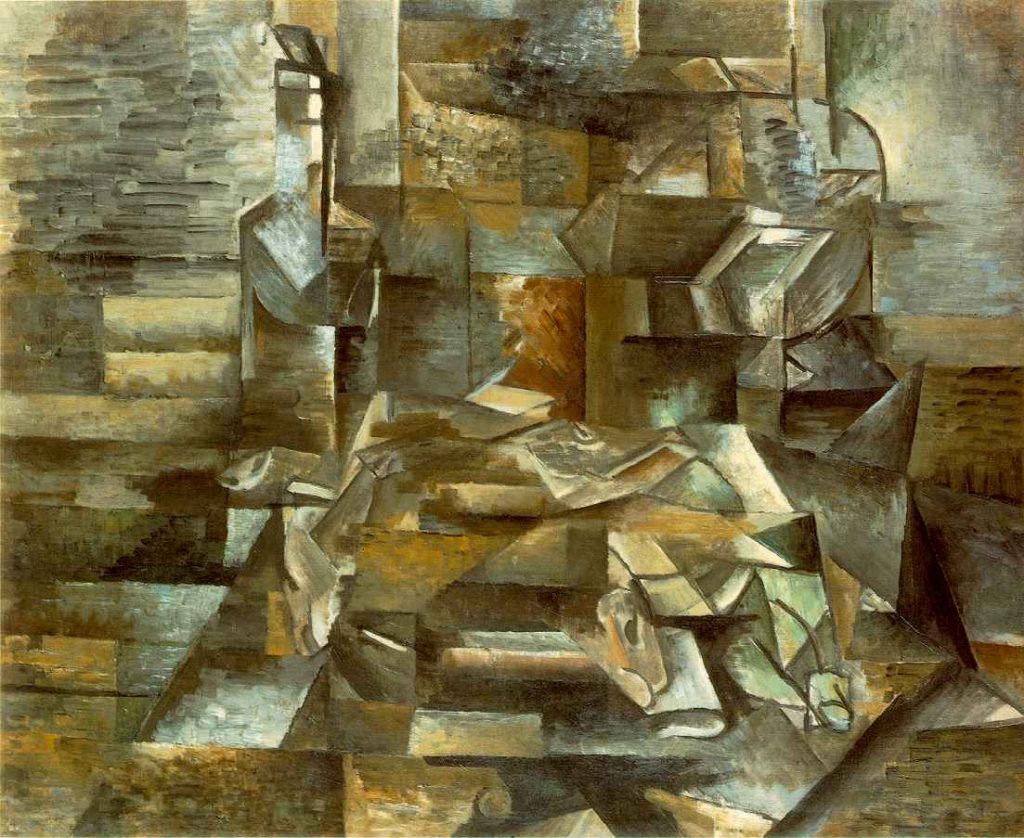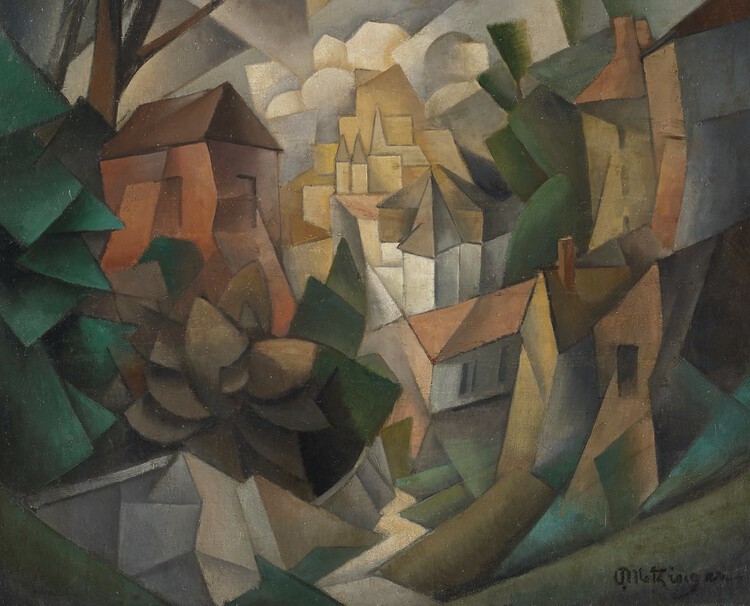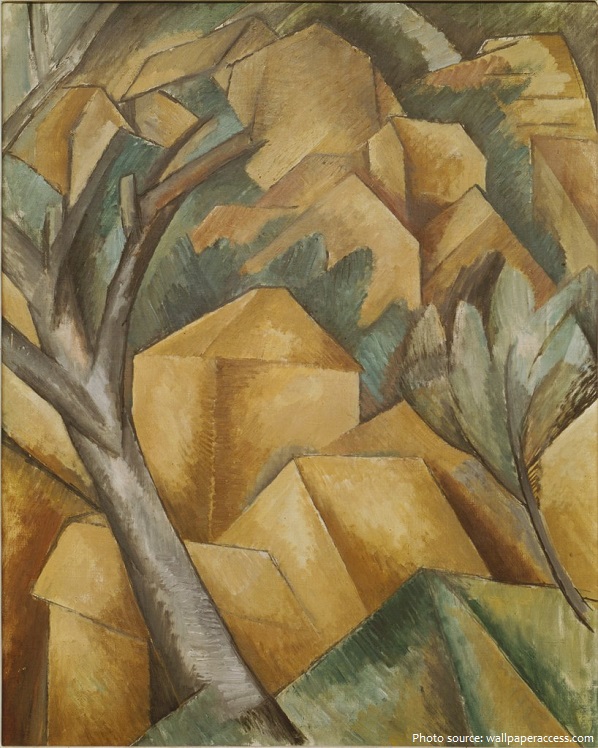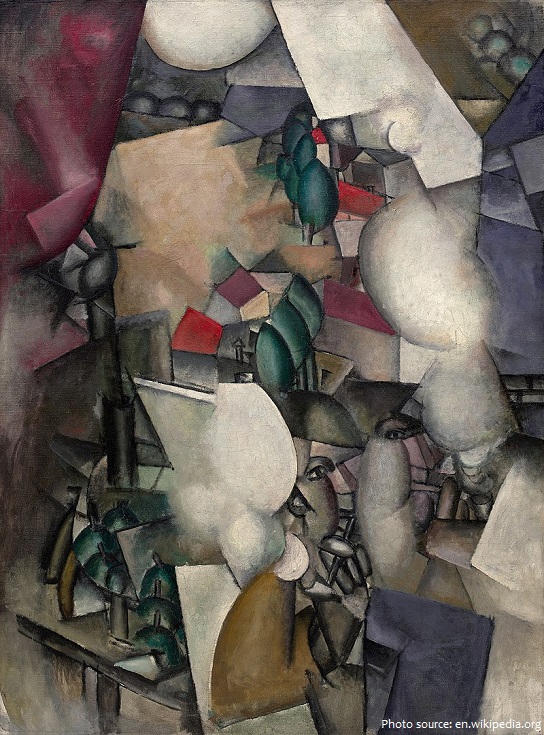
Cubism, highly influential visual arts style of the 20th century that was created principally by the artists Pablo Picasso and Georges Braque in Paris between 1907 and 1914.
The Cubist style emphasized the flat, two-dimensional surface of the picture plane, rejecting the traditional techniques of perspective, foreshortening, modeling, and chiaroscuro and refuting time-honoured theories that art should imitate nature. Cubist painters were not bound to copying form, texture, colour, and space. Instead, they presented a new reality in paintings that depicted radically fragmented objects.
The artists abandoned perspective, which had been used to depict space since the Renaissance, and they also turned away from the realistic modeling of figures.

Cubists explored open form, piercing figures and objects by letting the space flow through them, blending background into foreground, and showing objects from various angles. Some historians have argued that these innovations represent a response to the changing experience of space, movement, and time in the modern world. This first phase of the movement was called Analytic Cubism.
Since its emergence over 100 years ago, Cubism has been regarded as one of modern art‘s most famous and fascinating art movements.
At the turn of the century, Post-Impressionism and Fauvism—movements inspired by the Impressionists‘ experimental approach to painting—dominated European art. French painter, sculptor, printmaker, and draughtsman Georges Braque (1882-1963) contributed to the Fauvist movement with his polychromatic paintings of stylized landscapes and seascapes.
In 1907, Braque met Spanish painter, sculptor, printmaker, and designer Pablo Picasso (1881-1973). At this time, Picasso was in his “African Period,” producing primitive works influenced by African sculpture and masks. Like Braque’s Post-Impressionist paintings, these pieces played with form (and sometimes color), but remained figurative.
The term “Cubism” was first used by French critic Louis Vauxcelles in 1908 to describe Braque’s landscape paintings. Painter Henri Matisse had previously described them to Vauxcelles as looking comprised of cubes. The term wasn’t widely used until the press adopted it to describe the style in 1911.
By 1912, Picasso and Braque had begun to incorporate words in the paintings, which evolved into the collage elements that dominate the second era of Cubism, known as Synthetic Cubism. This phase was also marked by the flattening of the subjects and brightening of colors.

Braque further experimented with collage, leading to his creation of the papier collé technique, seen in 1912’s Fruit Dish and Glass, a concoction of wallpaper placed within the gouache. The introduction of collage broadened the form’s color palette further.
In the second phase of Cubism, Synthetic Cubism practicioners explored the use of non-art materials as abstract signs. Their use of newspaper would lead later historians to argue that, instead of being concerned above all with form, the artists were also acutely aware of current events, particularly World War I.
A significant modification of Cubism between 1914 and 1916 was signaled by a shift towards a strong emphasis on large overlapping geometric planes and flat surface activity. This grouping of styles of painting and sculpture, especially significant between 1917 and 1920, was practiced by several artists; particularly those under contract with the art dealer and collector Léonce Rosenberg. The tightening of the compositions, the clarity and sense of order reflected in these works, led to its being referred to by the critic Maurice Raynal as ‘crystal’ Cubism. Considerations manifested by Cubists prior to the outset of World War I—such as the fourth dimension, dynamism of modern life, the occult, and Henri Bergson’s concept of duration—had now been vacated, replaced by a purely formal frame of reference.
Japan and China were among the first countries in Asia to be influenced by Cubism. Contact first occurred via European texts translated and published in Japanese art journals in the 1910s.
While Picasso and Braque are credited with creating this new visual language, it was adopted and further developed by many painters, including Fernand Léger, Robert and Sonia Delaunay, Juan Gris, Roger de la Fresnaye, Marcel Duchamp, Albert Gleizes, and Jean Metzinger. Though primarily associated with painting, Cubism also exerted a profound influence on 20th-century sculpture and architecture.
Just as in painting, Cubist sculpture is rooted in Paul Cézanne’s reduction of painted objects into component planes and geometric solids (cubes, spheres, cylinders, and cones). And just as in painting, it became a pervasive influence and contributed fundamentally to Constructivism and Futurism.
Cubism formed an important link between early-20th-century art and architecture. The historical, theoretical, and socio-political relationships between avant-garde practices in painting, sculpture and architecture had early ramifications in France, Germany, the Netherlands and Czechoslovakia. Though there are many points of intersection between Cubism and architecture, only a few direct links between them can be drawn. Most often the connections are made by reference to shared formal characteristics: faceting of form, spatial ambiguity, transparency, and multiplicity.


